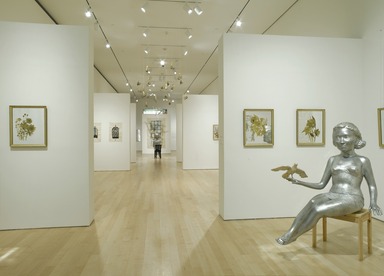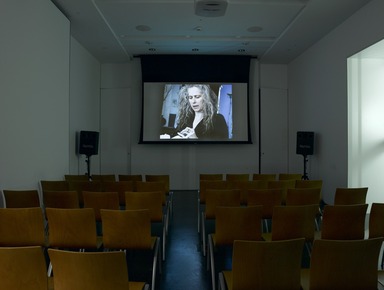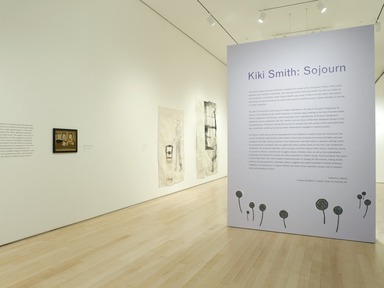

Kiki Smith: Sojourn, February 12, 2010 through September 12, 2010 (Image: DIG_E2010_Kiki_Smith_01_PS2.jpg Brooklyn Museum photograph, 2010)
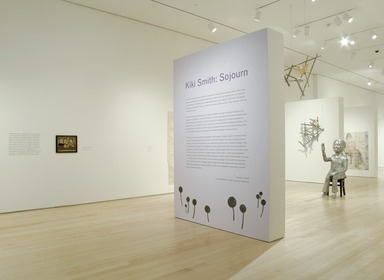
Kiki Smith: Sojourn, February 12, 2010 through September 12, 2010 (Image: DIG_E2010_Kiki_Smith_02_PS2.jpg Brooklyn Museum photograph, 2010)
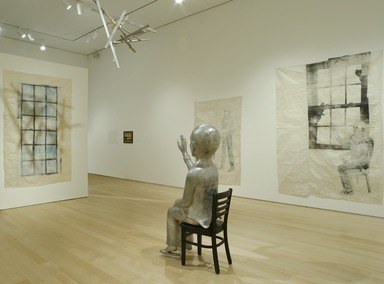
Kiki Smith: Sojourn, February 12, 2010 through September 12, 2010 (Image: DIG_E2010_Kiki_Smith_03_PS2.jpg Brooklyn Museum photograph, 2010)
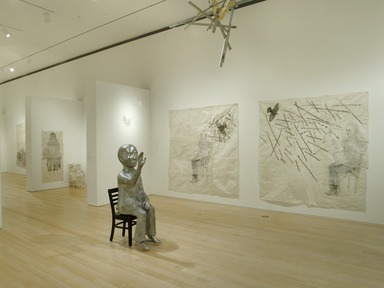
Kiki Smith: Sojourn, February 12, 2010 through September 12, 2010 (Image: DIG_E2010_Kiki_Smith_04_PS2.jpg Brooklyn Museum photograph, 2010)
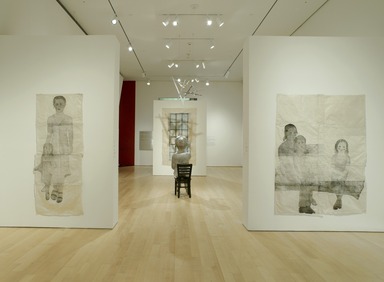
Kiki Smith: Sojourn, February 12, 2010 through September 12, 2010 (Image: DIG_E2010_Kiki_Smith_05_PS2.jpg Brooklyn Museum photograph, 2010)

Kiki Smith: Sojourn, February 12, 2010 through September 12, 2010 (Image: DIG_E2010_Kiki_Smith_06_PS2.jpg Brooklyn Museum photograph, 2010)

Kiki Smith: Sojourn, February 12, 2010 through September 12, 2010 (Image: DIG_E2010_Kiki_Smith_07_PS2.jpg Brooklyn Museum photograph, 2010)
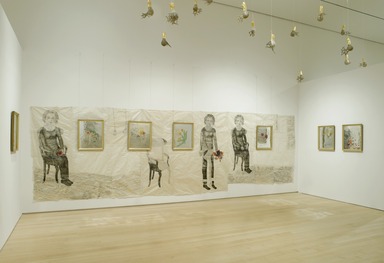
Kiki Smith: Sojourn, February 12, 2010 through September 12, 2010 (Image: DIG_E2010_Kiki_Smith_08_PS2.jpg Brooklyn Museum photograph, 2010)

Kiki Smith: Sojourn, February 12, 2010 through September 12, 2010 (Image: DIG_E2010_Kiki_Smith_09_PS2.jpg Brooklyn Museum photograph, 2010)
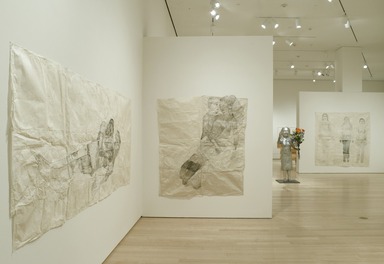
Kiki Smith: Sojourn, February 12, 2010 through September 12, 2010 (Image: DIG_E2010_Kiki_Smith_10_PS2.jpg Brooklyn Museum photograph, 2010)
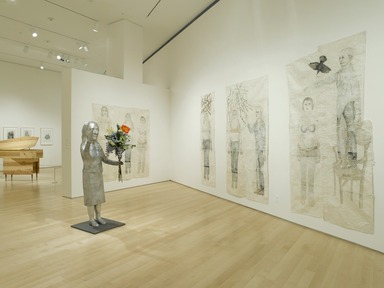
Kiki Smith: Sojourn, February 12, 2010 through September 12, 2010 (Image: DIG_E2010_Kiki_Smith_11_PS2.jpg Brooklyn Museum photograph, 2010)
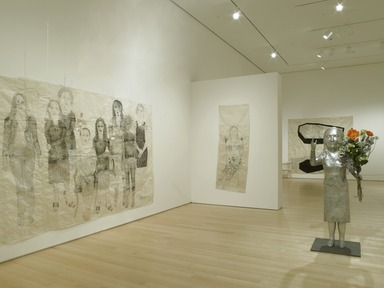
Kiki Smith: Sojourn, February 12, 2010 through September 12, 2010 (Image: DIG_E2010_Kiki_Smith_12_PS2.jpg Brooklyn Museum photograph, 2010)

Kiki Smith: Sojourn, February 12, 2010 through September 12, 2010 (Image: DIG_E2010_Kiki_Smith_13_PS2.jpg Brooklyn Museum photograph, 2010)

Kiki Smith: Sojourn, February 12, 2010 through September 12, 2010 (Image: DIG_E2010_Kiki_Smith_14_PS2.jpg Brooklyn Museum photograph, 2010)
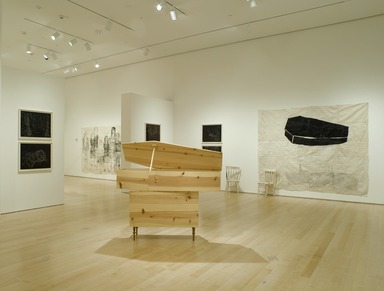
Kiki Smith: Sojourn, February 12, 2010 through September 12, 2010 (Image: DIG_E2010_Kiki_Smith_15_PS2.jpg Brooklyn Museum photograph, 2010)
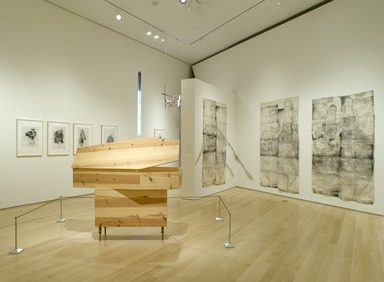
Kiki Smith: Sojourn, February 12, 2010 through September 12, 2010 (Image: DIG_E2010_Kiki_Smith_16_PS2.jpg Brooklyn Museum photograph, 2010)

Kiki Smith: Sojourn, February 12, 2010 through September 12, 2010 (Image: DIG_E2010_Kiki_Smith_17_PS2.jpg Brooklyn Museum photograph, 2010)

Kiki Smith: Sojourn, February 12, 2010 through September 12, 2010 (Image: DIG_E2010_Kiki_Smith_18_PS2.jpg Brooklyn Museum photograph, 2010)
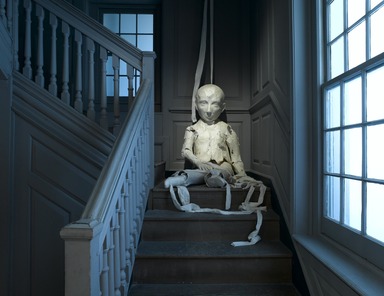
Kiki Smith: Sojourn, February 12, 2010 through September 12, 2010 (Image: DIG_E2010_Kiki_Smith_19_PS2.jpg Brooklyn Museum photograph, 2010)
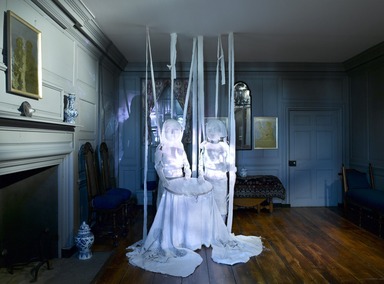
Kiki Smith: Sojourn, February 12, 2010 through September 12, 2010 (Image: DIG_E2010_Kiki_Smith_20_PS2.jpg Brooklyn Museum photograph, 2010)

Kiki Smith: Sojourn, February 12, 2010 through September 12, 2010 (Image: DIG_E2010_Kiki_Smith_21_PS2.jpg Brooklyn Museum photograph, 2010)

Kiki Smith: Sojourn, February 12, 2010 through September 12, 2010 (Image: DIG_E2010_Kiki_Smith_22_PS2.jpg Brooklyn Museum photograph, 2010)
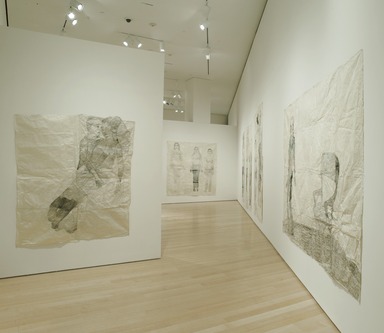
Kiki Smith: Sojourn, February 12, 2010 through September 12, 2010 (Image: DIG_E2010_Kiki_Smith_23_PS2.jpg Brooklyn Museum photograph, 2010)
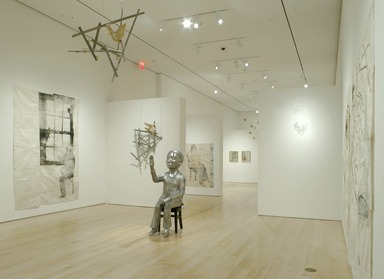
Kiki Smith: Sojourn, February 12, 2010 through September 12, 2010 (Image: DIG_E2010_Kiki_Smith_24_PS2.jpg Brooklyn Museum photograph, 2010)

Kiki Smith: Sojourn, February 12, 2010 through September 12, 2010 (Image: DIG_E2010_Kiki_Smith_25_PS2.jpg Brooklyn Museum photograph, 2010)

Kiki Smith: Sojourn, February 12, 2010 through September 12, 2010 (Image: DIG_E2010_Kiki_Smith_26_PS2.jpg Brooklyn Museum photograph, 2010)
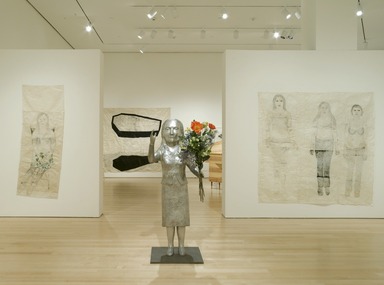
Kiki Smith: Sojourn, February 12, 2010 through September 12, 2010 (Image: DIG_E2010_Kiki_Smith_27_PS2.jpg Brooklyn Museum photograph, 2010)
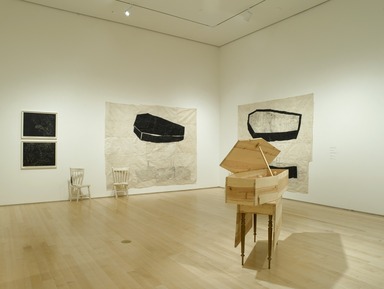
Kiki Smith: Sojourn, February 12, 2010 through September 12, 2010 (Image: DIG_E2010_Kiki_Smith_28_PS2.jpg Brooklyn Museum photograph, 2010)
Kiki Smith: Sojourn
-
Kiki Smith: Sojourn
The notion of space has had a particular resonance for women artists throughout history. Their artistic impulses have long been constrained, often because women have had neither the time nor a place to work creatively. In the British author Virginia Woolf’s 1929 essay “A Room of One’s Own,” she asserts that privacy and personal liberty are vital to the success of creative pursuits. Space, therefore, is the key to artistic inspiration.
The idea of how women found space for creative inspiration in the past is the point of departure for Sojourn, this exhibition by Kiki Smith (American, b. Germany 1954) relating to the lives of women artists.Smith’s imagination was fired by a chance encounter with a reproduction of Prudence Punderson’s eighteenth-century needlework The First, Second, and Last Scene of Mortality (displayed nearby). In this remarkable piece, Punderson outlines the course of a woman’s life, with scenes of birth and death flanking a remarkable rendering of a young woman independently engaged in creative pursuits.
For Sojourn, Smith has turned the long galleries of the Elizabeth A. Sackler Center for Feminist Art into a series of intimate, domestically scaled rooms in which she introduces her lyrical and highly personal vocabulary of images. Because women’s lives traditionally have taken place in domestic settings, Smith has expanded her installation into two eighteenth-century period rooms on this floor. Like Punderson’s needlework, the sculptural vignettes, works on paper, and other objects within Sojourn evoke the course of a woman’s lifetime, marked by the struggles unique to female artists as well as the contemplative exhilaration that defines the moment of creative inspiration. In Smith’s hands, the Annunciation (the scene in which Mary learns she will be mother to Jesus) becomes an analogy for this moment, linking artistic vision to spiritual experience. Ultimately, Sojourn suggests the creative potential of women limited by obligations and propriety as it explores Smith’s own ideas of how inspiration reveals itself in women’s literal and metaphorical space.
Catherine J. Morris Curator,
Elizabeth A. Sackler Center for Feminist Art
-
November 1, 2009
Kiki Smith: Sojourn, a major site-specific installation that explores ideas of creative inspiration and the cycle of life in relation to women artists, will be on view February 12 through September 12, 2010, in the Elizabeth A. Sackler Center for Feminist Art. The exhibition will draw from a variety of work by Kiki Smith in a range of media, including cast objects, unique sculpture, and works on paper. The artist will also incorporate her work into two of the Brooklyn Museum’s eighteenth-century period rooms in the nearby Decorative Arts galleries.
Inspired, in part, by an important eighteenth-century New England needlework, Prudence Punderson’s The First, Second and Last Scenes of Mortality (Connecticut Historical Society, Hartford), Smith focuses on a variety of universal experiences, from the milestones of birth and death to the quotidian, such as the daily chores of domestic life. She also analyzes the artist’s creative development and associates it with the stages in a lifetime, beginning with the creative awakening or birth and followed by a period of exploration, the achievement of artistic maturity, the later part of life, and, finally, death.
The exhibition’s gallery space will be divided into segmented rooms containing the sculptures and components of the installation. Sojourn will include work incorporating other iconographic appropriations that have interested the artist in the past, including representations of the life of the Virgin Mary, ancient mythical figures, and more contemporary figures such as the suffragettes of the 1920s.
In a career spanning more than three decades, Kiki Smith has produced a body of work unique in its engagement with social and political mores, particularly as they relate to the physical experiences and emotional lives of women. She has worked in a remarkably wide range of media. Best known as a sculptor, she is also an adept printmaker and draftsman and has made significant work in glass, including installations using stained glass.
One of three artist daughters of the late Minimalist sculptor Tony Smith (1912–1980), Kiki Smith at an early age helped her father fashion cardboard models for his monumental geometric sculptures. Her interest in the body as subject manifested itself early in her career and was augmented by her training as an emergency medical technician. By the mid-1980s, she had gained a reputation for work that focused on the biological systems of human bodies. Themes of regeneration, birth, and the cycles of life proliferate in her art. Her early affiliation with the political action and artists’ collaborative group Colab fostered her interest in print media and the adaptation of commercial strategies for disseminating information.
Smith gained international fame with her first major New York exhibition in 1988, and her influence has continued to grow through more than 150 solo exhibitions. She was the 2009 recipient of the Edward MacDowell Medal and was honored with a Skowhegan Medal for sculpture in 2001.
Kiki Smith: Sojourn is organized by Catherine Morris, Curator of the Elizabeth A. Sackler Center for Feminist Art, Brooklyn Museum. It is the fourth venue in a series of site-specific installations, a long-term project by the artist that originated at Museum Haus Esters, Krefeld, Germany (March 16–August 24, 2008) and traveled to Kunsthalle Nürnberg (September 18–November 16, 2008) and Fundació Joan Miró, Barcelona (February 19–May 24, 2009).
This exhibition is made possible by the Elizabeth A. Sackler Foundation.
Press Area of Website
View Original
